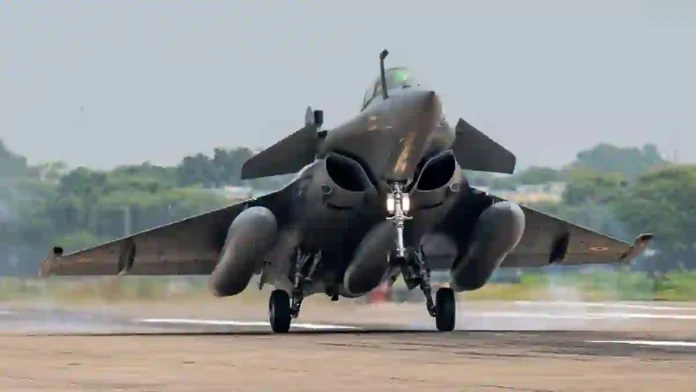India is entering a pivotal phase in modernising its air combat capabilities by planning to acquire an additional 114 Rafale fighter jets from France—a move poised to transform the Indian Air Force’s (IAF) operational readiness and the future balance of air power in South Asia.
This historic procurement, expected to be finalised via a direct government-to-government (G2G) agreement, marks a critical shift away from protracted global tenders under the long-delayed Multi-Role Fighter Aircraft (MRFA) program.
Read- India Is Preparing To Acquire Nearly 450 Fighter Jets In The Coming Years
The urgency stems from the dual challenge of rapidly depleting squadron strength—exacerbated by the imminent retirement of the last Soviet-era MiG-21s—and escalating threats from neighbouring powers, notably China and Pakistan.
As of August 2025, the IAF’s operational fighter strength has plunged to an all-time low of 29 squadrons, shrinking from 31 after MiG-21 retirements—a stark deficit against the sanctioned strength of 42.5 squadrons needed to credibly deter collusive or simultaneous threats from Pakistan and China.
China’s ongoing delivery of at least 40 fifth-generation J-35A stealth fighters to Pakistan, as well as the existing squadrons of J-10C jets equipped with PL-15 long-range air-to-air missiles, have intensified India’s race to bolster not just numbers but qualitative superiority.
This push for 114 Rafales accelerated dramatically following Operation Sindoor in May 2025, when Indian Rafales executed precision strikes on Pakistani positions, showcasing their advanced deep-strike capability.
Despite Pakistani fake claims of having downed six IAF jets, including three Rafales, India has firmly denied losses and underscored Rafale’s performance in combat as evidence for expanding their fleet.
Read- A Peek Into India’s Expanding Missile Arsenal
The effectiveness of Rafale—spanning air dominance, deep strike, electronic warfare, and maritime interdiction—has reinforced the IAF’s conviction that a direct deal will be faster and more economical than an open tender, enabling immediate operational gains and streamlined logistics.
India’s choice of the Rafale also aligns with industrial strategy. TATA Advanced Systems has signed multiple agreements with Dassault Aviation, allowing for Rafale fuselage production in Hyderabad, furthering the country’s Make in India and Atmanirbhar Bharat (self-reliance) initiatives. This local manufacturing component not only lowers life-cycle costs but positions India as a strategic partner in the global Rafale supply chain.
Beyond the Air Force, the Navy is slated to receive 26 Rafale-Marine jets for carrier operations, creating platform commonality and logistical synergy across India’s air and naval forces.
The combined orders, including the earlier purchase of 36 Rafales (delivered between 2020 and 2022), reflect a strategic shift away from Russian and American fifth-generation options (Su-57 and F-35), at least in the short term, while indigenous programs like the Advanced Medium Combat Aircraft (AMCA) remain years away.
Ultimately, the proposed $18–20 billion Rafale deal stands as India’s largest fighter jet procurement to date. It is not merely a matter of numbers but a bold strategic gambit to restore operational deterrence, deepen industrial cooperation, and maintain regional air superiority against rapidly evolving threats in a volatile security environment.
Ukrainian Media Report
Agency




